AN ANNIVERSARY RECOLLECTION: It exploded like an atomic bomb over Corto Maltese…

By PETER STONE
When The Dark Knight Returns hit the stands March, 20, 1986, Frank Miller already had a massive fan following, thanks to his Daredevil run (#158-191) where he introduced and then killed Elektra in the classic #181.
I remember sitting in a Boston bus station, waiting to go visit my mother and seeing Daredevil #181 on the spinner rack and spending a buck to buy it. I also remember it cleaned me out. A whole dollar back then was still a big deal for a single comic book. I read it twice and almost missed my bus. After that, I was hooked on Miller for life. “Pretty good, toots…but me? I’m magic!” Bullseye was suddenly my favorite villain.
Having reached what he thought was his creative peak on the character, he left Daredevil and moved on to a mini-series called Ronin, based on the classic samurai manga of writer Kazuo Koike and artist Goseki Kojima, who gave us their classic Lone Wolf and Cub. Although it was interesting, it was eclipsed by the news that Frank was going to work on Batman next.
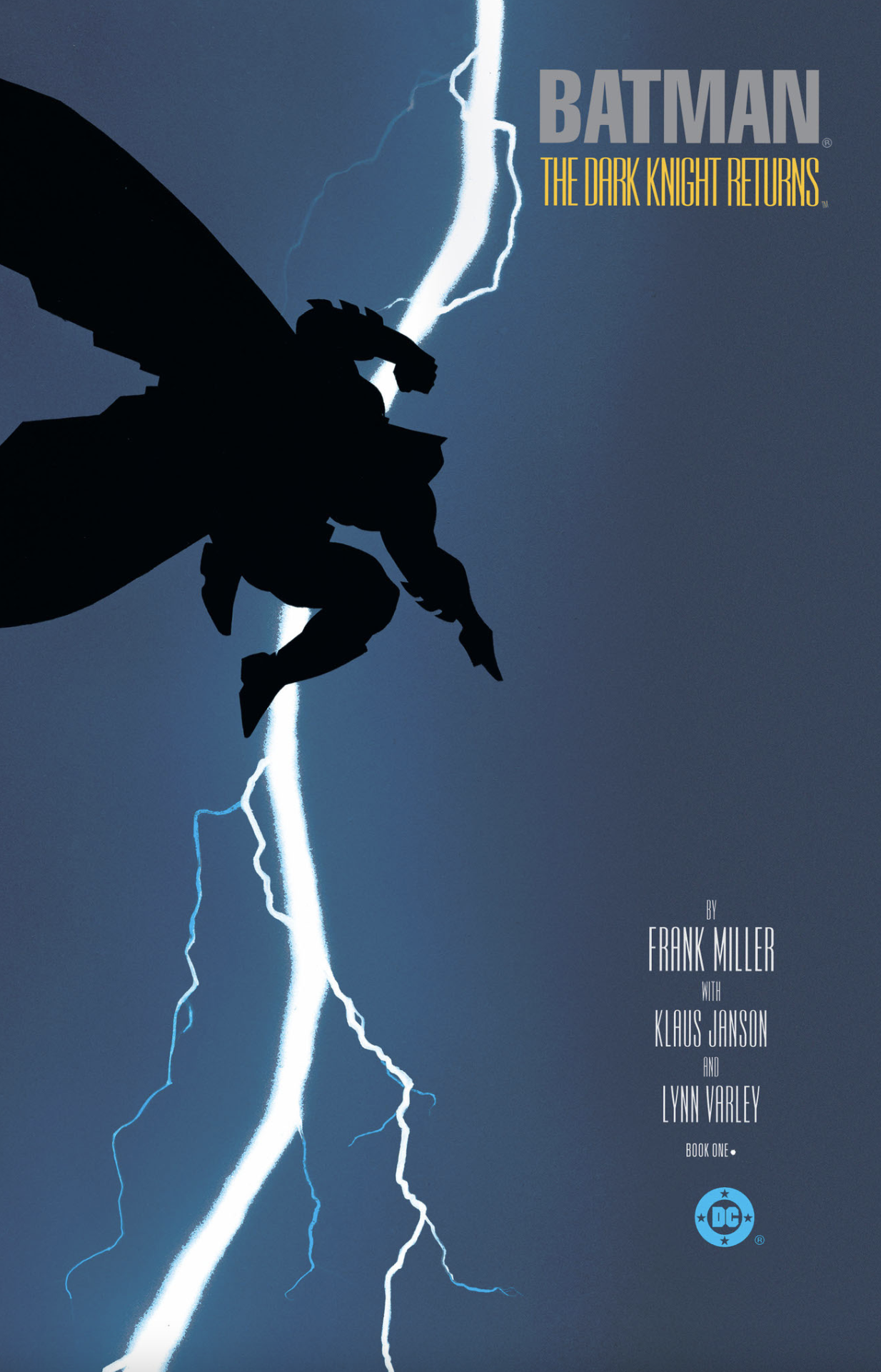
My comic-reading friends and I quivered with excitement. We waited and waited. Then, The Dark Knight Returns #1 — inked by Klaus Janson and colored by Lynn Varley — came out. Being at college in upstate New York, there were very few comic stores around. I begged and pleaded a friend of mine to drive me and a buddy to the closest comic store, a good half an hour away. I had a wad of cash in my pocket from other comic fans who wanted a copy. I believe I bought 10 of them.
The issue was thick and heavy. Perfect bound and 52 glorious pages. The paper bag that held the comics was like a bar of gold in my lap. I was practically vibrating with excitement.
When I returned to the dorm, everyone was super-excited to get their copies. We went into a friend’s room, plopped down in places, wherever we could find, and started to read. I had never been in a room in college that was so quiet before. All of us had read Swamp Thing by Alan Moore, Daredevil by Frank and John Byrne’s X-Men. We were comic experts in our estimation. This was something completely different.
Fifteen minutes passed quickly. “Three men die leaving the world no poorer.” “I see a reflection.” The dialogue affected all of us. It didn’t just affect us, it blew us away. It was like a silent atom bomb had gone off in that room. One by one, we put down the comic and drifted into a world of our own. I can only imagine this was like when Neal Adams’ first Batman came out. It devastated everyone who read it. Frank did exactly what Neal had done: He had changed Batman forever.
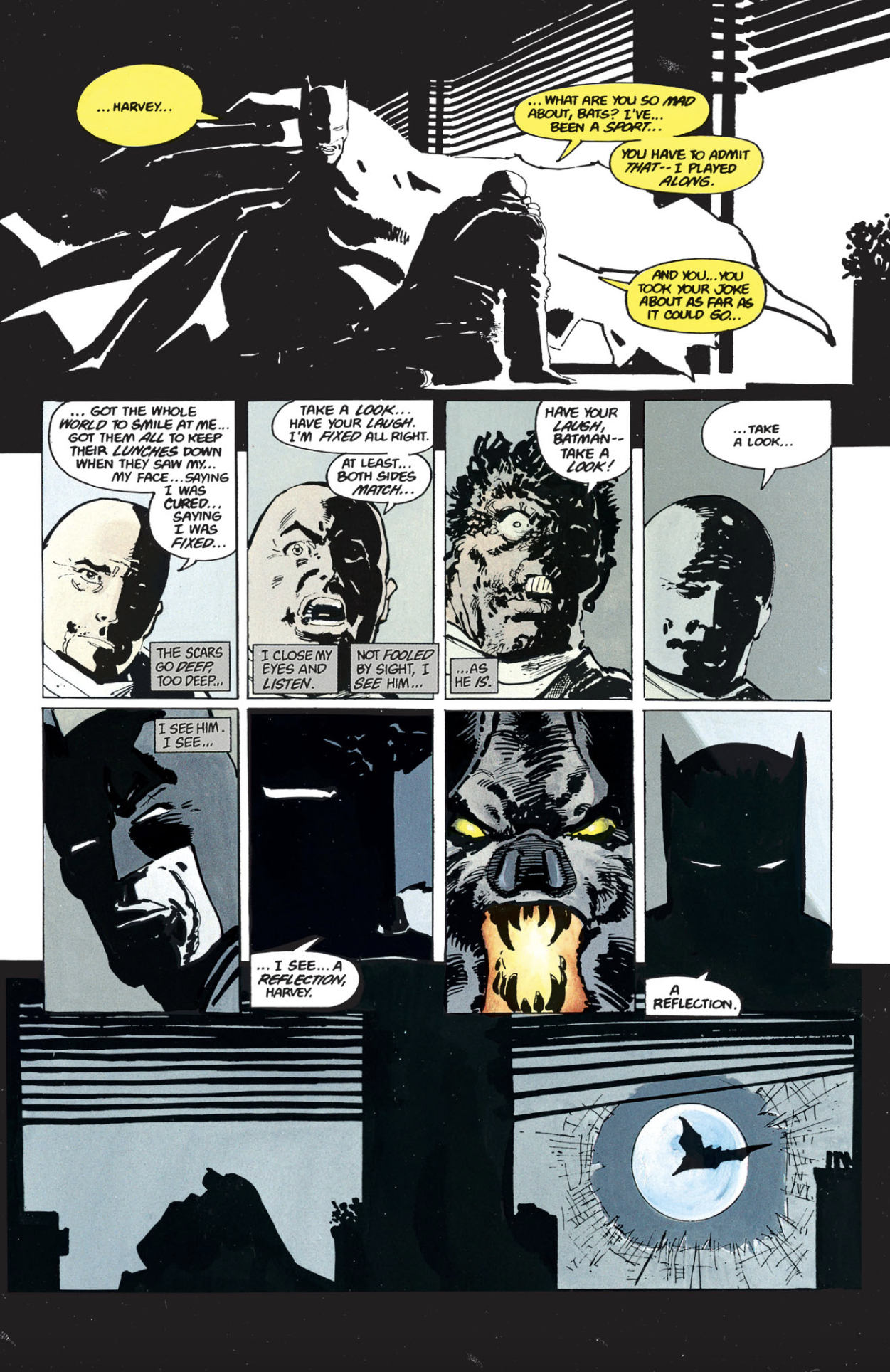
No longer was Batman the friendly caped crusader who gave presents to impoverished children on Christmas. Now he was a 55-year-old man, a dark crusader of justice and law enforcement. He had tools that would cripple criminals. His Batmobile was now a tank. Robin was a plucky young girl who worshiped him.
Frank’s dark noir version of Batman caught on immediately and continues until today. Older fans love Neal’s sleek, athletic version of the character, but Frank’s heavy-set, pile-driving, almost fascistic version of Batman hit just the right note during the time of President Reagan and Clint Eastwood and Arnold Schwarzenegger. We wanted our heroes to be tough and hard. Powerful with no sympathy for a criminal’s poor upbringing. At one point in the story, Batman cracks a shotgun in half and says, “This is the weapon of the enemy. We do not need it. We will not use it.” He finishes his monologue with, “Tonight, we are the law. I am the law.” BOOM. Batman IS the law.
Frank even gave us the fight we’d all secretly wanted. Batman versus the Man of Steel. Of course it was a one punch fight, right? Not at all. Batman had armor, missiles, guns… and a fortune. A fortune that could synthesize kryptonite. And radical friends like Green Arrow. Many of these concepts were used later by Zach Snyder for his Batman vs. Superman movie. Not with the same intensity as Frank, but obviously inspired by The Dark Knight Returns. Frank decides Batman is smarter and more clever than Superman, saying at the last moment of his victory, “I want you… to remember, Clark… in all the years to come… in your most private moments… I want you to remember…my hand…at your throat…I want…you to remember…the one man who beat you…”
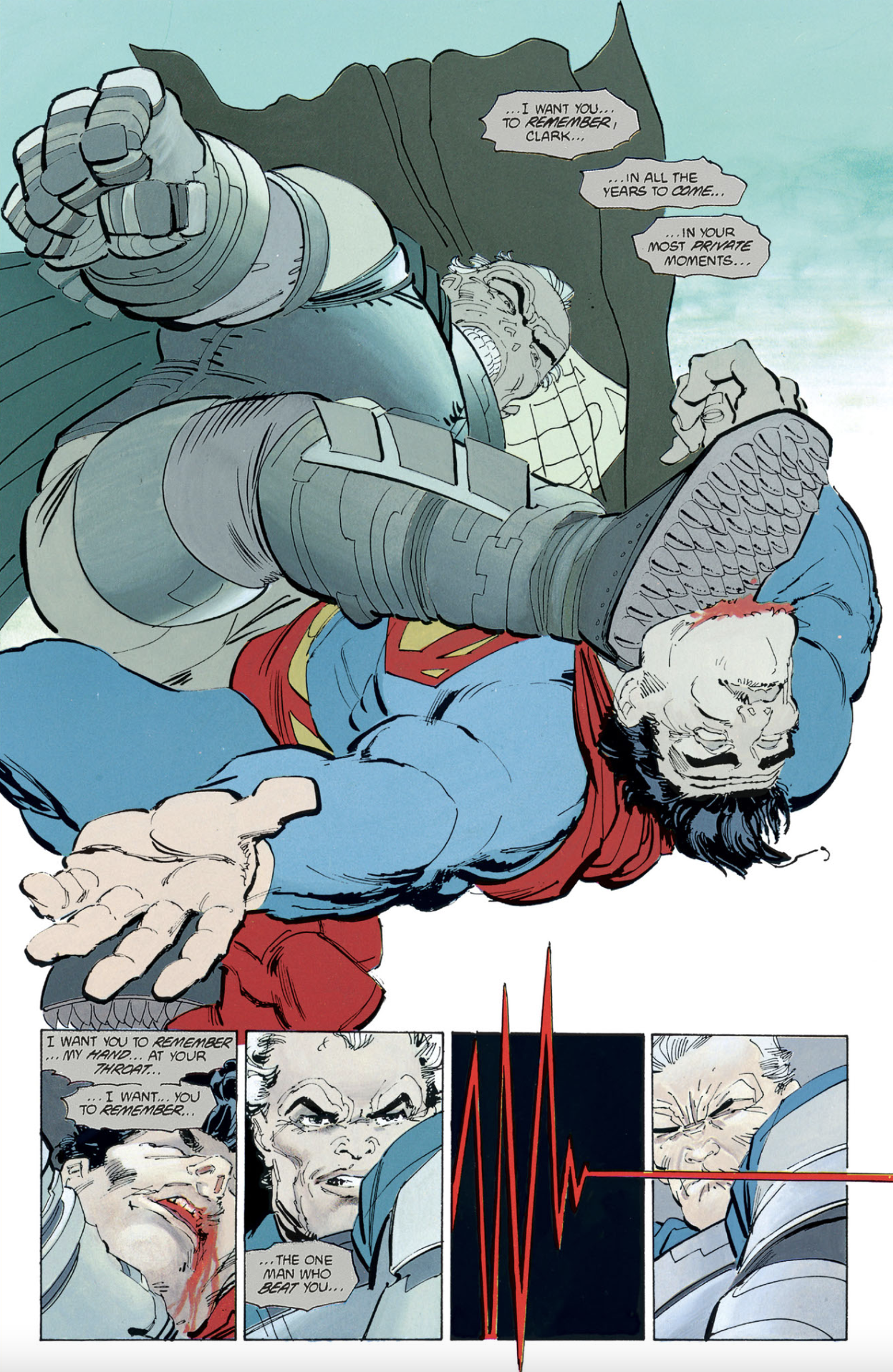
It’s an epic, brilliant moment that rivals Batman punching Ra’s Al Ghul in 1972’s Batman #244 after Ra’s says, “Are you a man – or fiend from Hell?!” Neal, of course, was a better artist but the emotion ringing out of the Batman/Superman scene makes your heart race the same way. Two versions of Batman, polar opposites, but still completely valid.
Then, in the final moment of this brilliant Dark Knight Returns series, Bruce Wayne kneels in his destroyed Batcave, surrounded by acolytes and Robin and says, “It begins here, an army – to bring sense to a world plagued by worse than thieves and murderers… this will be a good life. Good enough.” I thought this was a perfect end to the series. So much so, that I personally believe it is a mantra for how to live. “This will be a good life. Good enough.”
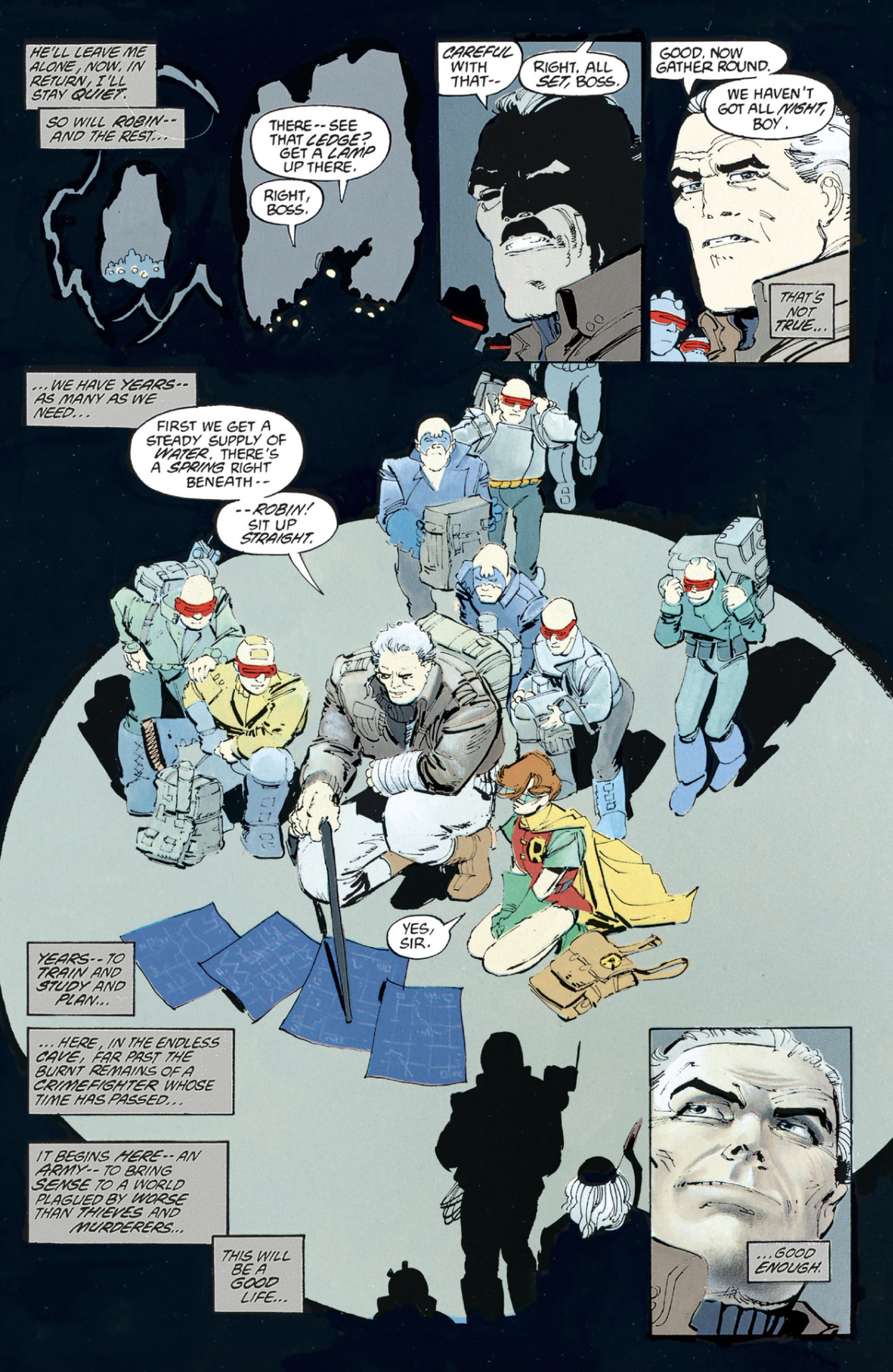
If you’re lucky enough to have certain editions of the story’s trade collection, including the first ones that came out in 1986, there is a special bonus: an absolutely insightful introduction by Alan Moore. Not only does he praise Miller for his interpretation of Batman and his mythos, but he also comments on the mythic aspect of these superheroes. A hero, like Robin Hood or Thor from the Norse Gods, have an ending. Robin Hood fires his last arrow into the forest to designate his burial place while Thor fights Jormungandr, the Midgard Serpent, defeats him but can only take nine steps before dying from the serpent’s venom. This brings the hero’s journey to an end. We know how they were born and how they died. It’s an important concept that comics had very rarely dealt with. Moore tells us that The Dark Knight Returns is not just a good story, but the conclusion of the Batman mythos. THIS is how he ends. Now you, as the reader, have the full story.
Of course, DC Comics decided later this was an Elseworlds story because Batman could never conclude. He would carry on forever. Month after month until the end of time. As a standalone series, The Dark Knight Returns is amazing and possibly Frank’s greatest work. I’m a big fan of David Mazzucchelli’s art, so I enjoy Batman: Year One and Daredevil: Born Again but I understand the love of Frank’s artistic storytelling. Frank always said he was influenced by Neal Adams and Will Eisner and you can certainly see it.
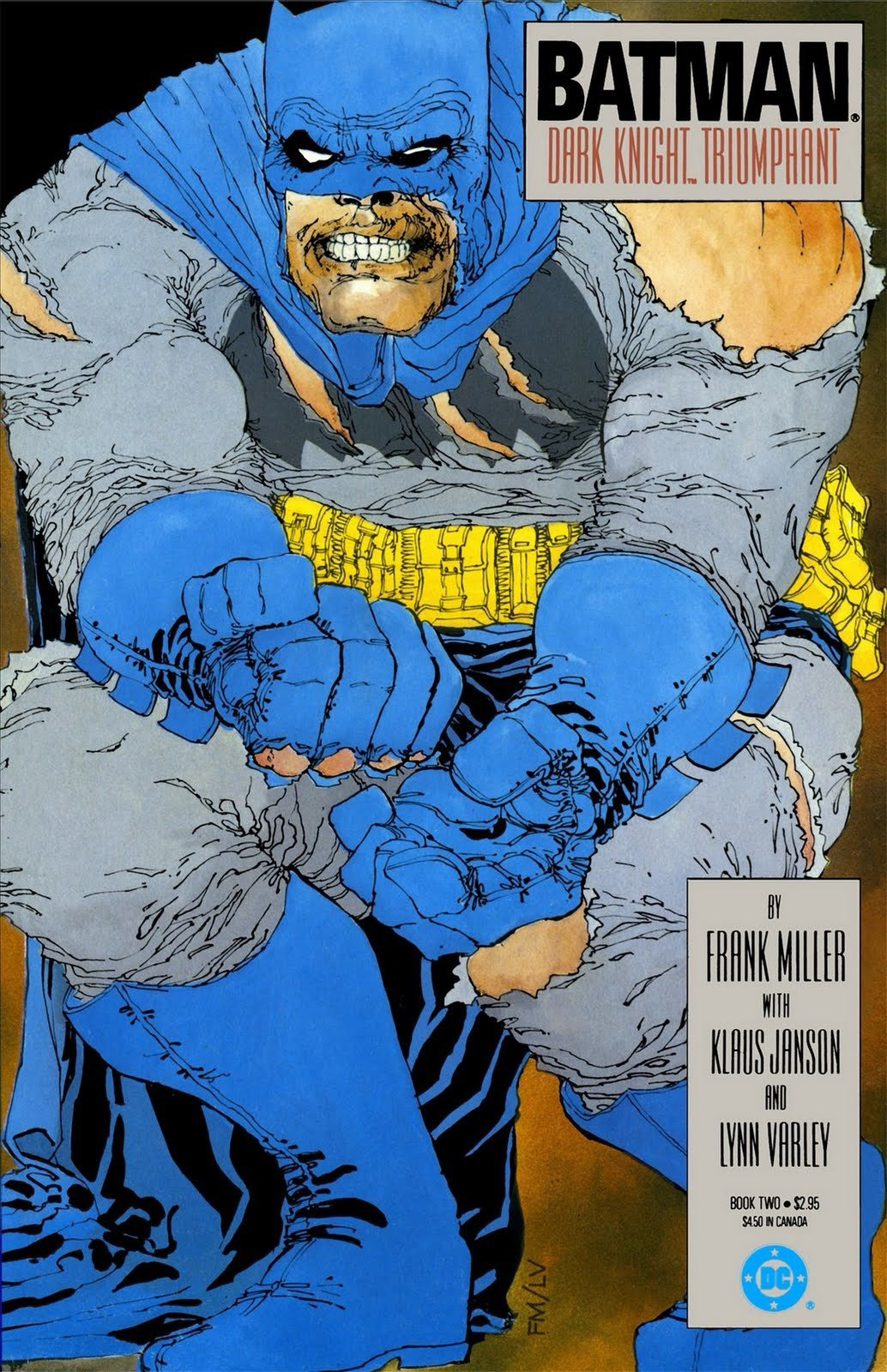
Of the monumentally influential artists connected to Batman, there are only a small handful. Bob Kane at the very beginning, of course. Dick Sprang through the slightly cartoony era of the Caped Crusader. In 1968, Neal Adams was integral to bringing Batman back to his roots of dark, mysterious action. Almost 20 years later Frank Miller blew up the world with his Dark Knight Returns. It took almost another 20 years before Jim Lee did Hush. Then Scott Snyder and Greg Capullo gave us The Court of Owls.
Each of these creatives radically changed the character of Batman, making him more modern and interesting. Today, Jorge Jimenez might be the next one but only time and the fans will tell. This is NOT to say there aren’t a tremendous number of others who have contributed to the mythos. Just a few names are Alan Moore, Steve Englehart Marshall Rogers, Marv Wolfman, Gene Colan, Don Newton, Michael Golden, Jim Aparo, Brian Bolland, Tim Sale, Jose Luis Garcia-Lopez and Alan Davis. What I’m talking about is not just great stories and art, but monumental changes and alterations to the character. Neal and Frank especially transformed the character of Batman into something different.
The Dark Knight Returns was astounding. It was revolutionary. It changed the way we looked at Batman. We appreciated that Frank had reached those heights of brilliance. His career went from being a desperate attempt to get work to being one of the most sought-after artists in the business. He became one of the best writers in comics. Just so we all know, Batman never killed anyone. He couldn’t even kill the Joker, who deserved it more than anyone. Zack Snyder never understood that.
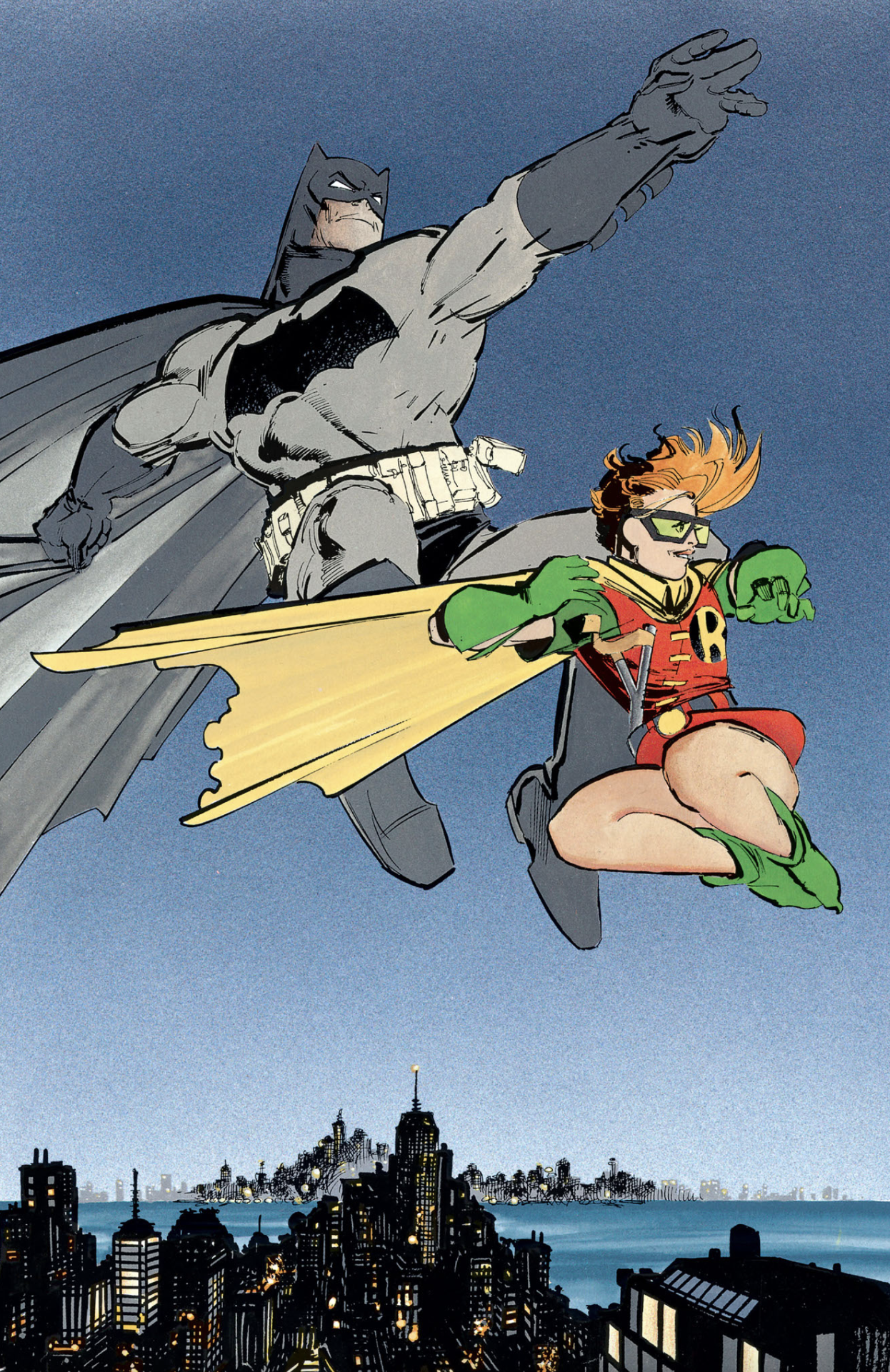
It was a miniseries that changed Batman forever. Neal didn’t necessarily agree with Frank’s vision of the character, but he respected Frank’s ability and writing. It wasn’t what he wanted to do with Batman, but he saw how people reacted to Frank’s work. Then Frank made that amazing transition to Hollywood. He wrote screenplays… acted briefly… and then, gasp, he co-directed a movie. He OPENED THAT DOOR! He allowed comic artists to get involved in the greatest entertainment medium ever. A comic artist COULD direct a movie! It was what everyone who drew comics sort of dreamed of. And here was an artist doing it!
Frank never closed the door behind him. In the future, we will see brilliant comics artists directing Hollywood movies. They will make Batman, Superman, and the X-Men into the movies they could — and maybe should — be. Artists who spend every day drawing stories might be pretty good at composing images with real people. Right? Personally, I’d love to see a movie directed by Adam Hughes, Lee Weeks, Bryan Hitch or even (gasp) Milo Manara. It all started with The Dark Knight Returns.
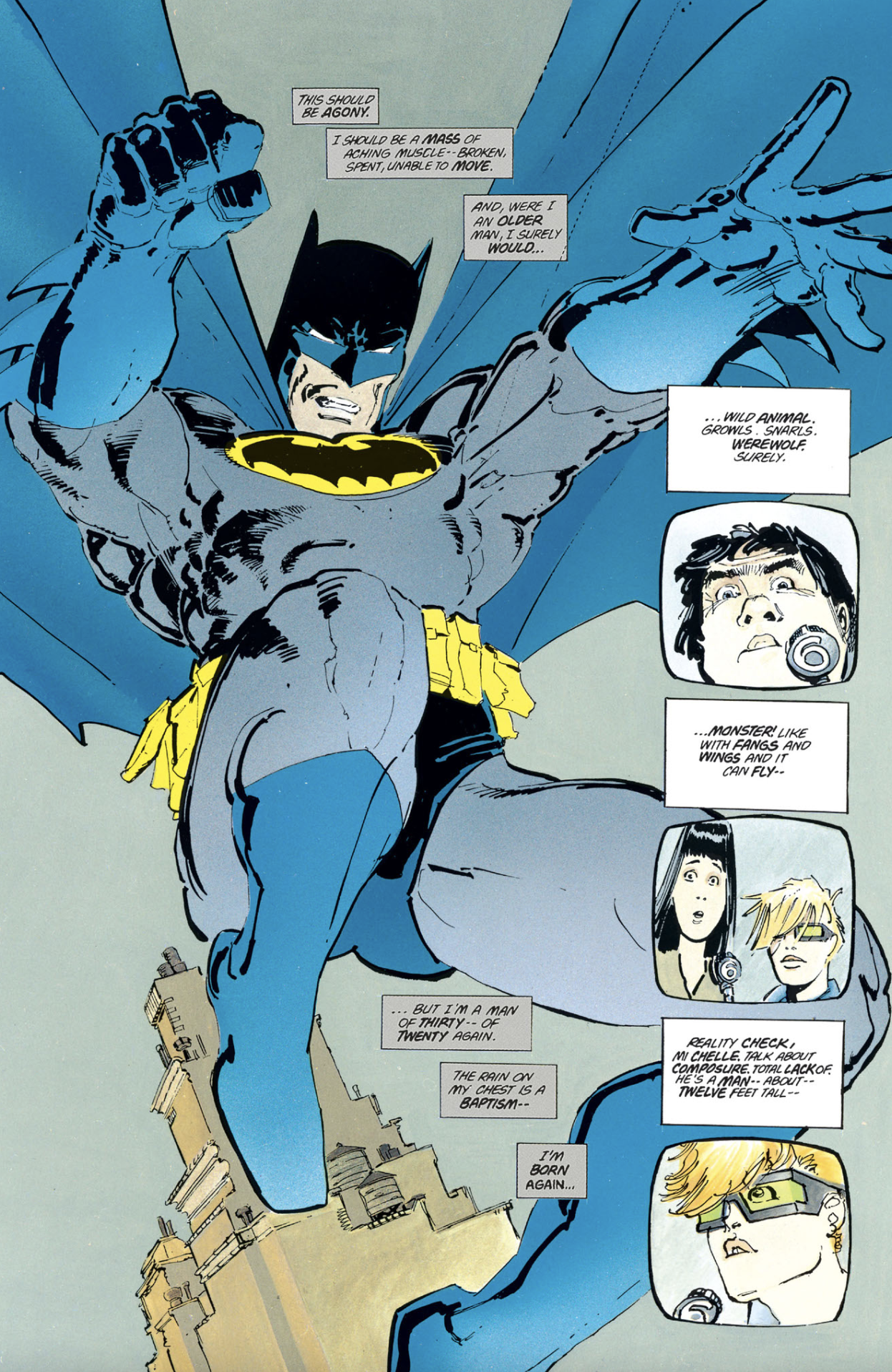
The original story spawned two sequel series and a spin-off or two. They never captured the magic of the first four issues, but Frank continued to generate new and interesting ideas connected to Batman. Much like Neal’s Batman: Odyssey, it never connected to the nostalgia of the original, but in a few years people might connect to the new material. Over the last 20 years or so, Frank and Neal gave us new worlds for Batman.
Seems like there might be some more stories there.
—
NOTE from Dan: The Dark Knight Returns’ release date varies by source but we’ve long held it was March 20, 1986. If you have strong evidence that’s incorrect, let us know! Thanks!
—
MORE
— FRANK MILLER’s and NEAL ADAMS’ BATMAN: Two Spectacular, Conflicting Visions of the Dark Knight. Click here.
— What Happened the Day DC Learned DARK KNIGHT RETURNS Was a Smash. Click here.
—
—
Peter Stone is a writer and son-in-law of the late Neal Adams. Be sure to check out the family’s twice-weekly online Facebook auctions, as well as the NealAdamsStore.com, and their Burbank, California, comics shop Crusty Bunkers Comics and Toys.

March 20, 2024
Great recollection. But how Does Alan Moore lead the list of Bat-mythologizers (indisputably great as he is, his Batman output is essentially one story) while Denny O’Neil isn’t even mentioned?
March 20, 2024
There is a growing sentiment that TDKR is “not really that great”. Hogwash! When it was released, it was a revelation, and such a well crafted and well executed product! I think the dismissive attitudes are due to the fact that the tone and flavor of TDKR has been copied and retreaded by SO MANY (often lesser) creators since.
March 20, 2024
I was 17 when it came out, ran to the comic store to get it first day and it blew me away. Everything about it, the format, that cover, art, colors, story, it really was a wonderful time for comics and I’m sure glad I was there for it.